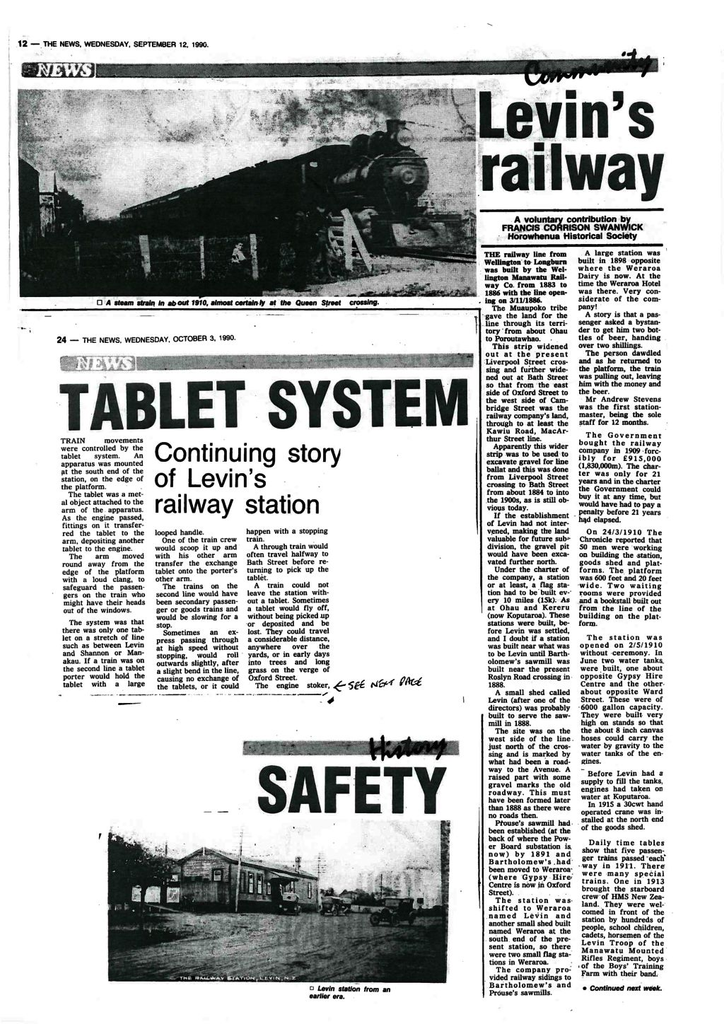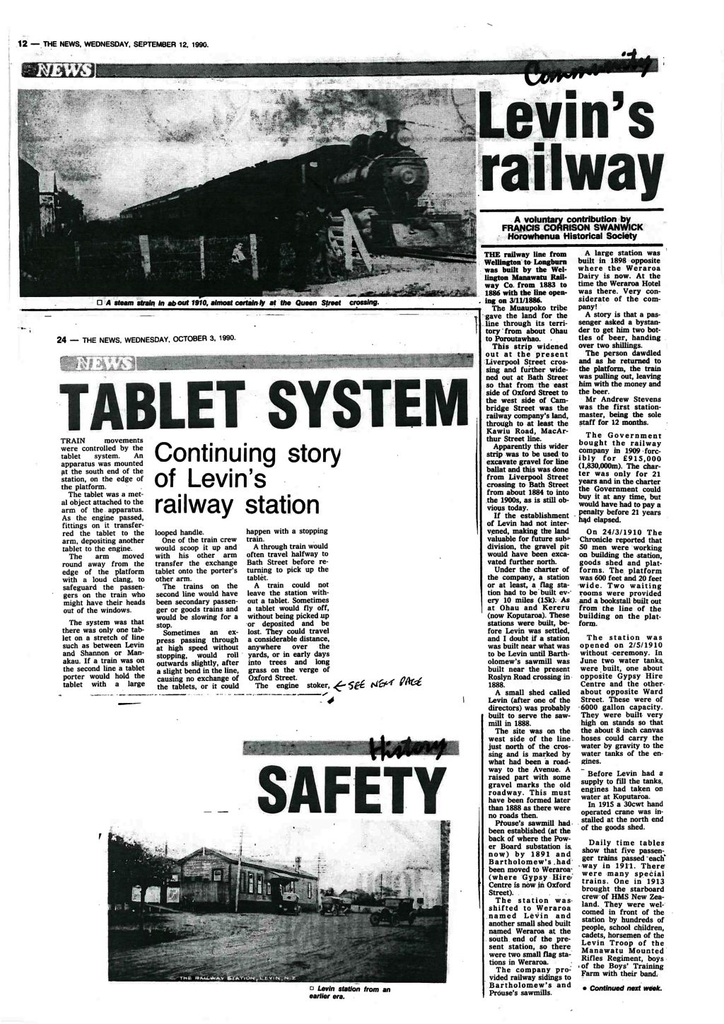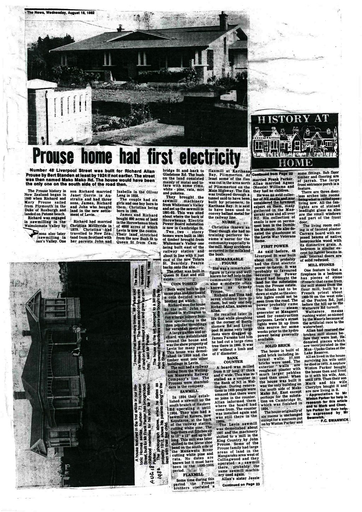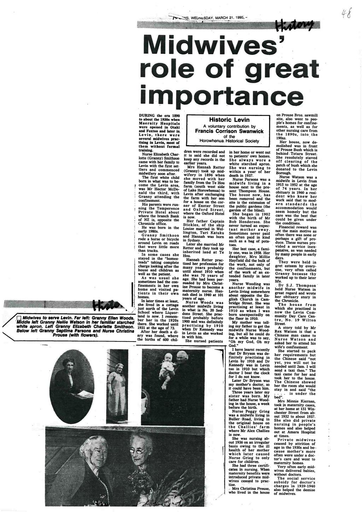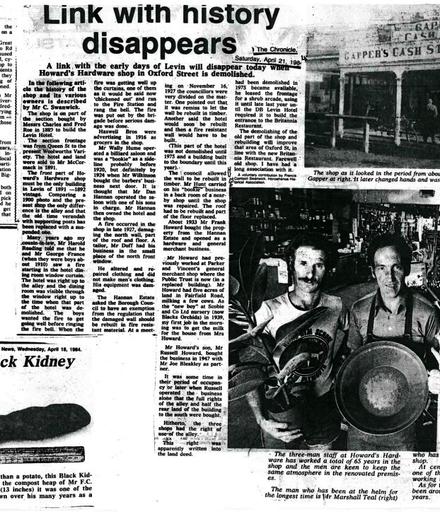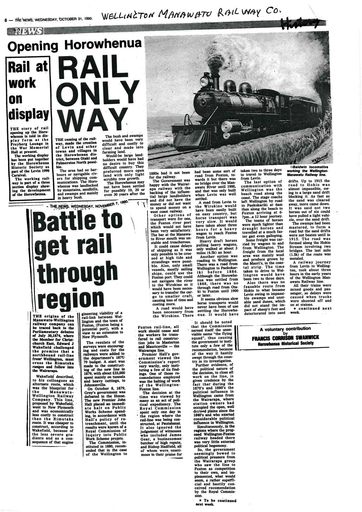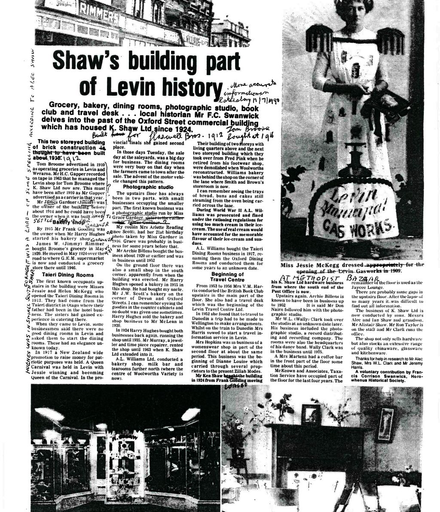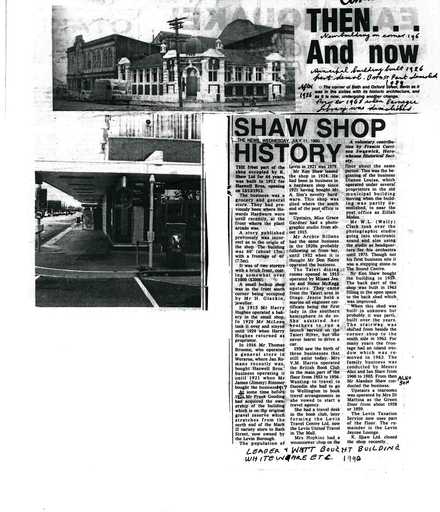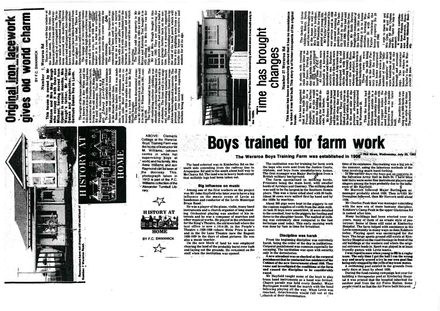The tablet was a metal object attached to the arm of the apparatus. As the engine passed, fittings on it transferred the tablet to the arm, depositing another tablet to the engine.
The arm moved round away from the edge of the platform with a loud clang, to safeguard passengers on the train who might have their heads out of the windows.
The system was that there was only one tablet on a stretch of line such as between Levin and Shannon or Manakau. If a train was on the second line, a tablet porter would hold the tablet with a large looped handle.
One of the train crew would scoop it up and with his other arm transfer the exchange tablet onto the porter’s other arm.
The trains on the second line would have been secondary passenger or goods trains and would be slowing for a stop.
Sometimes an express passing through at high speed without stopping would roll outwards slightly, after a slight bend in the line, causing no exchange of the tablets, or it could happen with a stopping train.
A through train would often travel halfway to Bath Street before returning to pick up the tablet.
A train could not leave the station without a tablet. Sometimes a tablet would fly off, without being picked up or deposited and be lost. They could travel a considerable distance, anywhere over the yards, or in early days into trees and long grass on the verge of Oxford Street.
The engine stoker, guard and station staff would have to search for it and if it was in darkness, it could take some time to find.
If it could not be found there were special alternative procedures. The system ensured only one train could be on a section of line between stations. The tablet system ended about 20 years ago with a computer system.
A head-on collision occurred at the Levin station in 1953, but this was not the fault of the tablet system.
A train from the north was very late and a train was waiting at the station so the north train could pass. The fault was that the points were not changed to put the train on the second line.
No-one was hurt, but the two engines were rather mangled. If a secondary passenger train was on the second line, with an express by the platform, passengers would have to clamber off the platform and cross the line to board the train after the express had moved out.
There were petrol and oil depots in Cambridge Street. One, owned by the Shell Co was where Lanes carpark is now, from 1926 to 1954 when Cappers Transport took over as agents for the owners. It closed in 1964.
The Vacuum Oil Co also had a depot in Cambridge Street from 1926 to 1957 when MacFarlanes Transport took it over, acting as agents. Both depots had rail sidings.
Petrol would arrive in 9000 gallon (35,000 litre) rail tankers. The petrol then was unloaded into underground tanks and distributed by motor tankers.
In about 1954 road transport was freed somewhat and the petrol came direct by motor tanker.
In 1951 the goods shed was extended at the south end and a new goods office built at the north end. The station platform was extended by 40 feet (12m) in 1966. With the use of steam engines ceasing, the water tanks were demolished in the 1960s.
The station yard is probably much the same as in 1910. In 1981, there was the main line, a crossing loop, five other loops, a delivery siding through the goods shed and two back shunts.
These could accommodate 327 four-wheel wagons. The station platform was extended 40 feet (11m) in 1966 and it was probably then that a new station master’s office was built on the west side, jutting out from the main building.
The bookstall was run by Mr. Brian Lacey from 1943 to 1951, the business having been bought from Miss Nora Morris. Brian closed it in 1951, but it was opened again, in the same year by Mr. Don Gapper, who ran it for three or four years. Then it was closed permanently and was demolished during station alterations.
The site of the station was not in the original grant to the railway company, there being only a narrow strip of land for the line up to the Liverpool Street crossing.
Extra land must have been obtained from Prouse Brother’s sawmill site on the east side and from Peter Bartholomew’s subdivision in 1894.
It is railway land from the east side of Oxford Street to the west side of Cambridge Street including the shrubbery on the north side and the lawn and shrubbery on the south side.
When road transport deregulation occurred, stock transport declined and the stockyards were demolished after extensive renovation in 1977.
Note: There has been confusion over the 1898 station. This was burnt in 1909 – Author.

